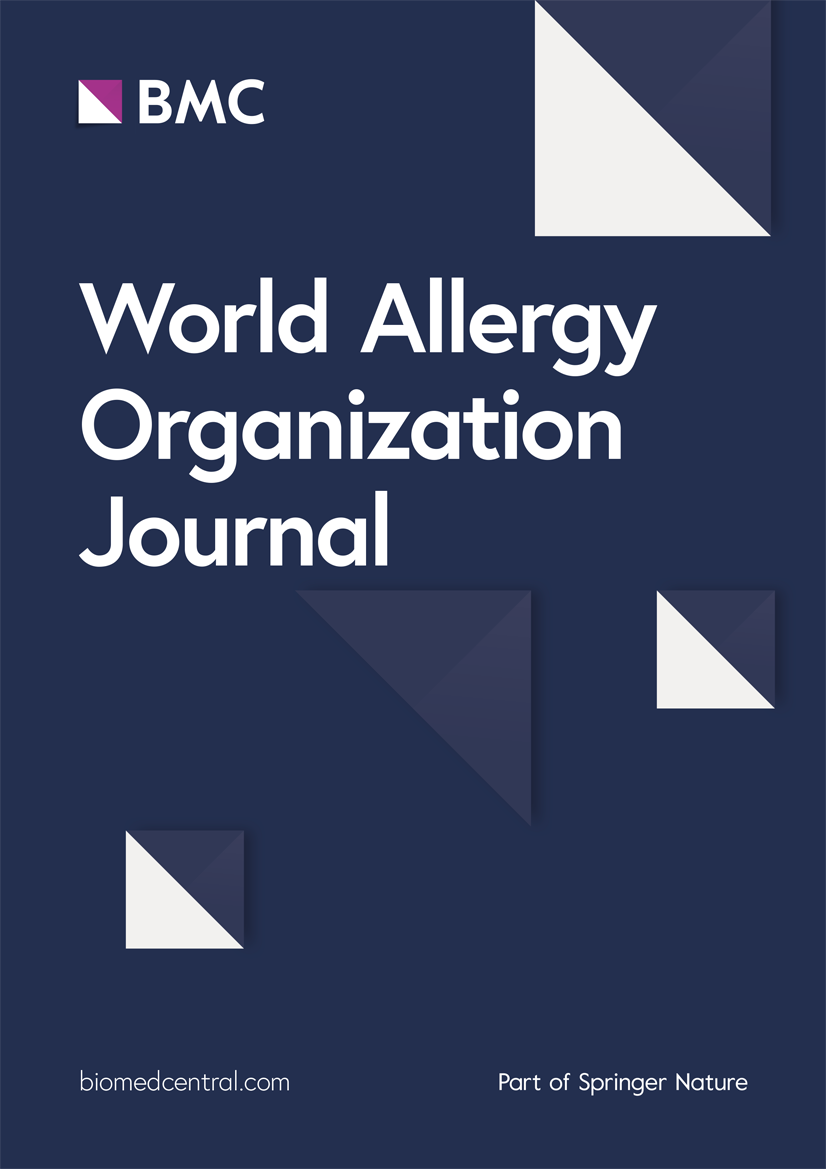更新非甾体抗炎药超敏反应的分类和常规诊断:WAO声明
IF 4.3
2区 医学
Q2 ALLERGY
引用次数: 0
摘要
非甾体抗炎药(NSAIDs)的超敏反应分为立即(或急性)和延迟。直接反应可进一步分为4种临床类型:nsaid加重呼吸系统疾病(N-ERD)、nsaid加重皮肤病(NECD)、nsaid致荨麻疹/血管性水肿(NIUA)和单一nsaid致荨麻疹/血管性水肿/过敏反应(SNIUAA)。具体来说,NIUA类型参考了≥2种属于不同化学组的非甾体抗炎药的反应,涉及无潜在慢性自发性荨麻疹患者的荨麻疹和/或血管性水肿。然而,有些符合NIUA表型交叉反应标准的患者报告反应涉及两个器官系统(例如,皮肤和呼吸系统;皮肤和胃肠道),并被称为“混合”。在儿科,这种类型的反应是公认的,并被称为非甾体抗炎药引起的荨麻疹/血管性水肿/过敏反应(NIUAA),我们建议将其扩展到成人。有一小部分N-ERD患者也报告皮肤症状,或者,NECD患者报告呼吸道症状。这两个亚组分别可诊断为混合性N-ERD和混合性NECD。事实上,他们是患有N-ERD或NECD的患者,他们的反应与过敏反应一致。在目前的非甾体抗炎药过敏分类中,非甾体抗炎药作为加重因素或辅助因素对食物过敏的反应不包括在内。最近,这类反应被分别定义为nsaid加重食物过敏(NEFA)和nsaid诱导食物过敏(NIFA)。世界过敏组织(WAO)的这份声明旨在更新非甾体抗炎药超敏反应的分类及其诊断,解决新的问题。本文章由计算机程序翻译,如有差异,请以英文原文为准。
Updating the classification and routine diagnosis of NSAID hypersensitivity reactions: A WAO Statement
Hypersensitivity reactions to non-steroidal anti-inflammatory drugs (NSAIDs) have been classified as immediate (or acute) and delayed. Immediate reactions can be further classified into 4 clinical types: NSAID-exacerbated respiratory disease (N-ERD), NSAID-exacerbated cutaneous disease (NECD), NSAID-induced urticaria/angioedema (NIUA), and single NSAID-induced urticaria/angioedema/anaphylaxis (SNIUAA). Specifically, the NIUA type references reactions to ≥2 NSAIDs belonging to different chemical groups, involving urticaria and/or angioedema in patients with no underlying chronic spontaneous urticaria. However, there are patients meeting cross-reactive criteria for NIUA phenotype who report reactions that involve 2 organ systems (eg, cutaneous and respiratory; cutaneous and gastrointestinal) and have been termed “blended”. In pediatrics, this type of reaction is recognized and has been termed NSAID-induced urticaria/angioedema/anaphylaxis (NIUAA), an acronym we suggest be extended now to adults. There are small subgroups of N-ERD patients who also report skin symptoms and, alternatively, NECD patients who report respiratory symptoms. These 2 subgroups could be diagnosed as having mixed N-ERD and mixed NECD, respectively. In fact, they are patients suffering from N-ERD or NECD who have had reactions consistent with anaphylaxis.
In the current classifications of NSAID hypersensitivity, the reactions in which NSAIDs act as aggravating factors or cofactors in subjects with sensitization to foods are not included. Recently, this type of reactions has been defined as NSAID-exacerbated food allergy (NEFA) and NSAID-induced food allergy (NIFA), respectively.
This Statement of the World Allergy Organization (WAO) aims to update both the classification of hypersensitivity reactions to NSAIDs and their diagnosis, addressing the novel issues.
求助全文
通过发布文献求助,成功后即可免费获取论文全文。
去求助
来源期刊

World Allergy Organization Journal
Immunology and Microbiology-Immunology
CiteScore
9.10
自引率
5.90%
发文量
91
审稿时长
9 weeks
期刊介绍:
The official pubication of the World Allergy Organization, the World Allergy Organization Journal (WAOjournal) publishes original mechanistic, translational, and clinical research on the topics of allergy, asthma, anaphylaxis, and clincial immunology, as well as reviews, guidelines, and position papers that contribute to the improvement of patient care. WAOjournal publishes research on the growth of allergy prevalence within the scope of single countries, country comparisons, and practical global issues and regulations, or threats to the allergy specialty. The Journal invites the submissions of all authors interested in publishing on current global problems in allergy, asthma, anaphylaxis, and immunology. Of particular interest are the immunological consequences of climate change and the subsequent systematic transformations in food habits and their consequences for the allergy/immunology discipline.
 求助内容:
求助内容: 应助结果提醒方式:
应助结果提醒方式:


